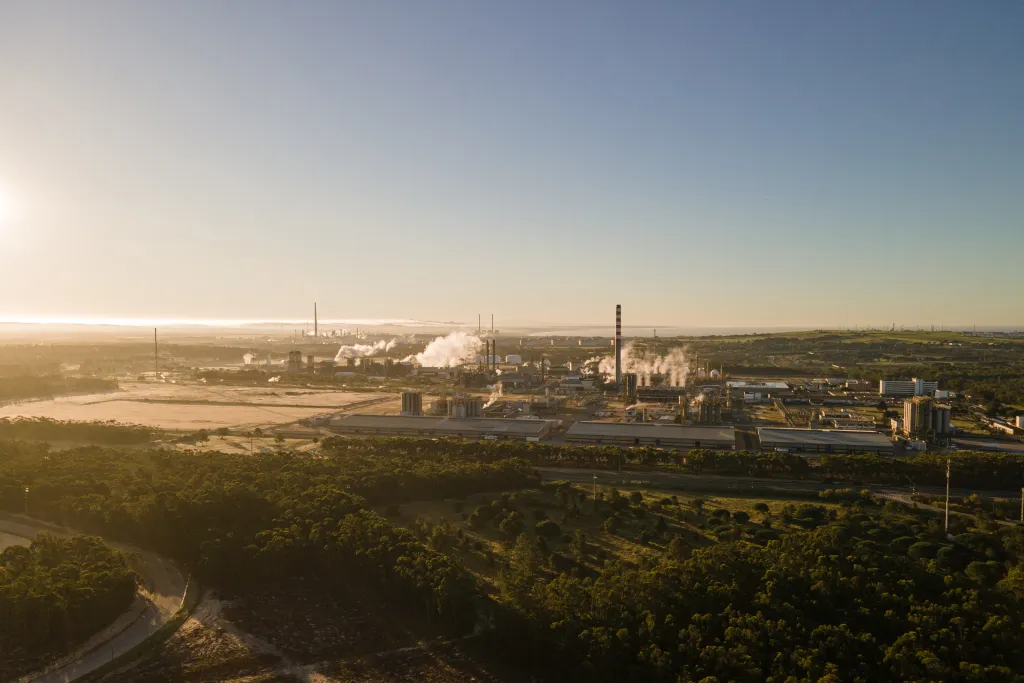Fibre-optic cables: the present and future of digital technology
Fibre-optic cables are responsible for 99% of the data and voice traffic that flows across the internet, making them the backbone of global digital connectivity.
These cables, like the EllaLink cable system, are made up of thin strands of glass or plastic, which use light to transmit data at incredibly high speeds over long distances. The efficiency and reliability of fibre-optic technology have made it indispensable for handling the exponential growth of digital communications. Unlike traditional copper cables, which can suffer from significant signal degradation and slower speeds over long distances, fibre-optic cables maintain signal quality and support higher bandwidths, making them ideal for today’s data-heavy applications.
With the increasing demand for real-time services such as video streaming, online gaming, cloud computing, and financial transactions, fibre-optic cables are designed to meet the needs of a hyper-connected world. This technology is also pivotal in supporting new developments in artificial intelligence, telemedicine, and the Internet of Things (IoT), where low latency and high-speed data transmission are critical.
The introduction of undersea fibre-optic cables, such as the EllaLink project, has further enhanced global communication by reducing latency and improving direct data routes between continents, paving the way for faster and more efficient digital interactions across the globe.
In addition, fibre-optic networks’ resilience and scalability allow them to adapt to future technological advancements, ensuring that they will continue to support the increasing volumes of data traffic for years to come. As more regions and industries become digitally dependent, the significance of fibre-optic infrastructure becomes ever more apparent, positioning it as a cornerstone of current and future digital ecosystems.
What are fibre-optic cables, and how do they work?
Fibre-optic cables are advanced communication cables that use light to transmit data at incredibly high speeds. They are composed of thin strands of glass or plastic, each about the thickness of a human hair, and can transmit vast amounts of data over long distances with minimal signal loss. These cables form the foundation of modern telecommunications, providing the backbone for internet, telephone, and television services worldwide.
Structure of Fibre-Optic Cables
A typical fibre-optic cable consists of three main layers:
- Coating/Buffer: the outer layer of the fibre-optic cable is a protective coating, often made from plastic, that shields the delicate glass fibres from damage, moisture, and other environmental factors.
- Core: the innermost part of the cable, made of pure glass or plastic, through which light signals travel. The core is responsible for carrying the data through light pulses.
- Cladding: the cladding surrounds the core and is made from a different material that reflects light. This reflective property helps maintain the light signal within the core, allowing it to travel long distances without significant loss.
The importance of fibre-optic cables
Undersea fibre-optic cables form the hidden foundation of global internet infrastructure, silently enabling the seamless flow of information that powers our digital world. These cables stretch across the ocean floor and create vital communication links between continents, supporting everything from everyday emails to large-scale data transfers used in industries like finance, healthcare, and entertainment. Without them, the internet as we know it would be drastically slower and far less reliable, as they handle the overwhelming majority of the world’s data traffic, including voice communications, emails, and video streaming.
One of the most remarkable aspects of undersea cables is their ability to transmit data at nearly the speed of light across vast distances, connecting the world’s most remote regions with major data hubs. This global network of cables, which now spans more than a million kilometres under the ocean, has enabled the rapid expansion of digital economies by facilitating international business, real-time communication, and the rise of cloud computing. These cables provide low-latency, high-capacity connections essential for the increasing demand for faster internet speeds and more robust digital services.
In addition to connecting major world economies, undersea cables are critical for emerging markets, particularly as digital transformation accelerates across developing regions. As more businesses, governments, and educational institutions shift online, the need for reliable, high-speed internet becomes non-negotiable, and undersea cables serve as the lifeline for this digital growth. Initiatives like EllaLink represent a broader trend where countries invest heavily in their undersea cable infrastructure to ensure better direct connections, reduce dependency on third-party countries, and bolster national security and economic resilience.
The global reliance on undersea cables underscores their importance in shaping the future of digital technology. With exponential data growth expected in the coming years due to new technologies like 5G, artificial intelligence, and virtual reality, undersea cables will continue to be the backbone that supports these innovations, ensuring fast and reliable data transmission across the globe. As the digital world expands, the importance of these submarine networks will only grow, solidifying their place as a key pillar of modern civilisation’s technological foundation.
Applications of fibre-optic technology
Fibre-optic technology is the backbone of many digital applications defining the modern digital economy. Its ability to quickly and efficiently transmit large amounts of data has made it indispensable for businesses, governments, and individuals. From the moment we send an email, make a video call, or stream a movie, fibre-optic cables are behind the scenes, ensuring these activities are completed with minimal delay and maximum efficiency.
One of the key advantages of fibre-optic technology is its scalability, allowing it to meet the demands of data-intensive industries. For example, in the healthcare sector, telemedicine relies on real-time video conferencing, remote diagnostics, and data sharing between hospitals across the globe. Fibre-optic networks enable doctors to collaborate instantly, even when located in different countries, offering life-saving consultations and surgeries guided remotely.
Another area where fibre-optic technology is pivotal is the expansion of smart cities and the Internet of Things (IoT). As more devices connect to the internet, from smart thermostats to traffic systems, a robust, high-capacity infrastructure is required to manage the massive volumes of data being exchanged. Fibre-optic cables provide the low-latency, high-bandwidth capabilities necessary to support these networks, making cities more efficient and connected.
The rise of 4K and even 8K video streaming in the entertainment industry requires an internet infrastructure that can handle large data streams without buffering. Fibre-optic technology delivers the speed and bandwidth needed to support these ultra-high-definition streams, ensuring viewers have a seamless experience. Online gaming, too, benefits from the low latency offered by fibre-optic networks. These networks provide gamers with real-time interactions and reduce lag, which is crucial for competitive play.
Moreover, as financial markets rely more on instant data transfer for transactions and stock trading, fibre-optic cables ensure that this data is transmitted with near-zero latency. The financial sector heavily depends on these fast, reliable connections to execute high-frequency trades in milliseconds, where even a slight delay can result in significant financial losses or gains.
Looking to the future, the rise of artificial intelligence (AI) and machine learning will further increase the need for efficient data transfer, as these technologies require vast amounts of real-time data to learn, adapt, and function effectively. Whether it’s autonomous vehicles navigating through busy streets or advanced analytics providing insights to businesses, fibre-optic cables will continue to serve as the critical infrastructure enabling these transformative technologies to operate at their full potential.
As digital ecosystems expand, fibre-optic technology will remain a cornerstone of innovation, powering the applications that will shape the future of society and the global economy.
The EllaLink fibre-optic cables
The EllaLink cable represents a significant leap forward in global connectivity, especially in bridging the digital divide between South America and Europe. This state-of-the-art infrastructure is designed to address the growing demand for low-latency, high-speed data transmission across the Atlantic.
Spanning a vast 6,000 kilometres under the ocean, EllaLink is engineered to provide a direct, high-capacity connection between the two continents, bypassing traditional routes through North America. This more efficient route reduces data transmission delays and enhances the reliability of international communication between Brazil and Europe.
The technical specifications of EllaLink are particularly impressive. Comprising four optical fibre pairs, this cable can support vast amounts of data traffic simultaneously, ensuring that the increasing demands of industries like cloud computing, digital media, and online financial services can be met without interruption. With a total data capacity of 100 terabits per second, EllaLink is a crucial piece of infrastructure that will underpin the growth of data-driven industries in Europe and South America.
One of the core benefits of this direct transatlantic connection is its impact on latency. By offering a more streamlined route, the cable significantly reduces the time it takes for data to travel between continents. Before EllaLink, most data between these regions would pass through the United States, leading to longer travel times and higher latency. With a direct link, businesses in Brazil, Portugal, and other connected regions can experience faster, more efficient internet services, directly influencing productivity and economic growth.
EllaLink also serves as a strategic infrastructure investment, reinforcing the importance of digital sovereignty for Europe and Latin America. By having a dedicated, private network connecting these regions, they can rely less on data passing through third-party nations, which enhances data security and mitigates potential risks of interception. This means greater control over their data and improved privacy protections for governments, businesses, and consumers.
EllaLink is also a testament to the growing importance of private investments in telecommunications infrastructure. The 1 billion reais investment that made this project possible highlights the critical role that private companies and investors play in building the future of global connectivity. By leading the charge in this development, EllaLink sets a new standard for how transoceanic cables can facilitate faster, more secure digital interactions across continents, paving the way for future projects that continue to redefine the global digital landscape.
Benefits of the EllaLink fibre-optic cables
The EllaLink cable transforms global data infrastructure, creating direct, high-speed connectivity between South America and Europe. One of its most prominent advantages is reducing latency, significantly enhancing the overall user experience across various digital services. By establishing a more efficient data route between Fortaleza in Brazil and Sines in Portugal, EllaLink bypasses the need for data routed through North America. This direct connection eliminates unnecessary detours, ensuring data can travel more smoothly and faster.
Reduced latency is a game-changer for industries that depend on real-time digital communication, such as financial services, entertainment, and cloud-based technologies. Faster data transmission means businesses can operate with improved efficiency, handling everything from financial trades to real-time collaboration with fewer delays. In particular, the EllaLink cable is a boon for industries like high-frequency trading, where milliseconds can determine success. It also enhances the performance of cloud services, which increasingly rely on fast and reliable data transfers to provide seamless experiences for users accessing applications, storage, and computing power.
Moreover, the EllaLink cable is designed to accommodate the growing demands of the digital economy, where data volumes are continually rising. Its immense capacity of 100 terabits per second allows it to support a wide array of bandwidth-intensive applications. This is especially crucial for the modern internet landscape, where services like video streaming, telemedicine, and e-gaming require high-speed connections to handle large amounts of data without compromising quality. With EllaLink, these services can operate more smoothly, enabling users to access high-definition content, perform critical remote diagnostics, and engage in real-time multiplayer gaming with minimal lag.
Another key benefit of the EllaLink cable is its role in enhancing data sovereignty and regional digital independence. Providing a direct transatlantic route between Europe and South America empowers countries on both continents to take greater control over their data flows, reducing reliance on third-party nations for international data transmission. This increased autonomy in data management is vital for privacy and security and ensuring that regional internet infrastructure can grow in alignment with local digital strategies.
Furthermore, the EllaLink project sets a new precedent for future undersea cable developments by demonstrating the importance of strategic regional links. It highlights the necessity of building infrastructure that directly serves the needs of specific regions, as opposed to relying on traditional, less efficient global data routes. This approach fosters greater connectivity and helps regions like South America and Europe remain competitive in the global digital economy, ensuring they can fully participate in the ongoing digital transformation.
Future predictions for global connectivity
The growing need for enhanced regional connectivity will drive further investments in high-capacity networks. As businesses and consumers demand more content delivered faster and with greater reliability, global infrastructure must evolve continuously.
Philippe Dumont, CEO of EllaLink, predicts that as content and data services become increasingly localised, more data centres will emerge across previously underserved regions. The future will see a proliferation of high-capacity undersea cables like EllaLink, creating a more interconnected and efficient global network, positioning regions such as Latin America and Europe at the forefront of the digital economy’s growth.
These trends in infrastructure development are not just a response to current demands but are also setting the stage for future innovations. With faster and more reliable internet connections, the world is moving toward new possibilities, from advanced AI applications to autonomous technologies and immersive virtual experiences. Projects like EllaLink are laying the groundwork for digital advancements shaping tomorrow’s global economy and society.


What are fibre-optic cables?
Fibre-optic cables are advanced communication cables made of thin strands of glass or plastic that use light to transmit data at high speeds. They form the backbone of modern telecommunications, enabling efficient internet, telephone, and television services.
How do fibre-optic cables work?
Fibre-optic cables transmit data through light signals travelling within a core surrounded by cladding that reflects light. This design minimizes signal loss, allowing for long-distance communication without degradation.
What are the advantages of using fibre-optic cables?
Fibre-optic cables offer numerous advantages, including high bandwidth, low latency, and resistance to electromagnetic interference. They can handle vast amounts of data, making them ideal for video streaming, online gaming, and cloud computing applications.
How do undersea fibre-optic cables impact global connectivity?
Undersea fibre-optic cables, such as EllaLink, enhance global connectivity by providing direct, high-speed links between continents. They reduce latency, improve data transmission efficiency, and support the growing demand for reliable internet services worldwide.
You May Also Like
Sines technological hub: the (huge) potential to become a world reference
Sines is the “Hidden Gem of Connectivity”, says Deloitte. EllaLink is already there with
PTC’25: A Wave of Innovation and Collaboration in Honolulu
The Pacific Telecommunications Council (PTC) annual conference (PTC’25) wrapped up in Hono
Going live in Cape Verde
On June the 6th, 2022, the EllaLink international submarine cable in Praia, Cape Verde, went live.


